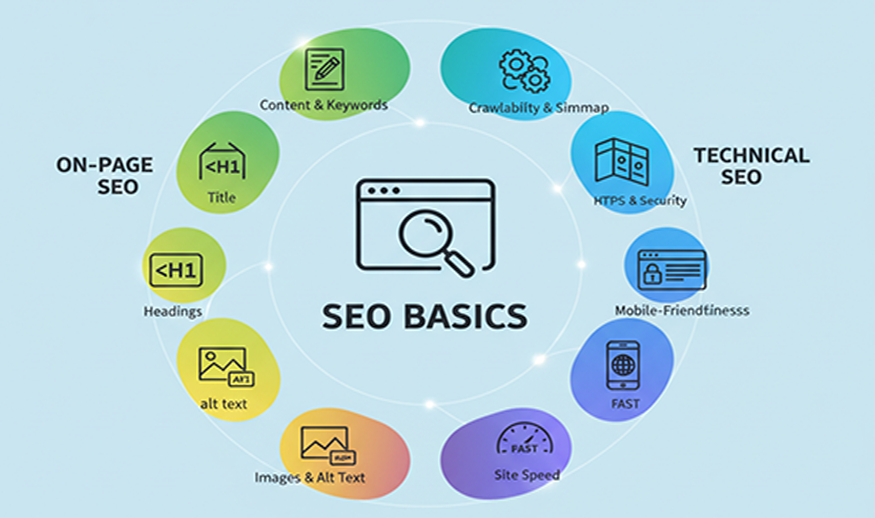
On-page and Technical SEO
On-page SEO involves optimizing individual web pages to improve their relevance for specific keywords, helping them rank higher and earn more relevant organic traffic. It is primarily centered around optimizing content and HTML elements that are within your direct control.
Content optimization
- Keyword research and integration: Identify the most relevant keywords your audience uses and incorporate them naturally into your content, especially within headings and the first paragraph.
- High-quality content: Create comprehensive, valuable, and trustworthy content that satisfies a user's search intent. Focus on writing for people first, then optimizing for search engines.
- Structured headings: Use headings (H1, H2, etc.) to logically organize your content. This improves readability for users and helps search engine crawlers understand the page's structure and topic.
- Multimedia optimization: Add images, videos, and infographics to improve engagement. Optimize images with descriptive filenames and alt text, and use WebP or AVIF formats for faster loading.
- Internal linking: Strategically link to other relevant pages on your site to create a logical site structure. This helps both users and search engines navigate your content and pass authority between pages.
Technical SEO
Technical SEO focuses on optimizing a website's infrastructure to ensure search engines can efficiently crawl, index, and understand it. It addresses the technical foundation that underpins your site's performance.
Site architecture and user experience
- Improve page speed: Optimize your site to load quickly on all devices. Compress images, minify CSS and JavaScript, and leverage browser caching to improve user experience and Core Web Vitals.
- Mobile-friendliness: Ensure your site is responsive and provides an excellent experience on mobile devices. Google uses mobile-first indexing, making a mobile-friendly design critical for ranking.
- Secure your site with HTTPS: Use a Secure Sockets Layer (SSL) certificate to enable HTTPS. A secure site protects user data and is a recognized ranking factor.
- Structured data (schema): Implement schema markup to give search engines extra context about your content. This can lead to rich results in the SERPs, like star ratings or event details.
Crawling and indexing
- Submit an XML sitemap: Create and submit a sitemap in Google Search Console to help search engines discover and index all your important pages.
- Manage your robots.txt file: This file tells search engine crawlers which pages they should or should not crawl. Configure it correctly to guide crawlers to your valuable content and block low-priority pages.
- Use canonical tags: To prevent duplicate content issues, use a canonical tag to indicate the preferred version of a page when similar content exists on multiple URLs.
- Fix broken links and redirects: Regularly audit your site to fix internal broken links, which harm user experience and waste crawl budget. Also, ensure redirects are set up correctly to avoid redirect chains and loops.
